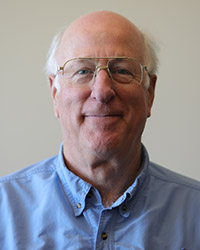Back
Oral
Hydraulics & Waterways
Turbulence Energy Balance for Suspended Sediment Transport at the Waco Gauge Brazos River Segment from a Mechanistic Formulation of Vertex Rings
Wednesday, May 21, 2025
1:45 PM – 2:00 PM Alaska Daylight Time (AKDT)
Room: Room 2
.jpg)
Ranjan S. Muttiah
Senior Professional Engineer
City of Fort Worth, Texas, United States
Peter Allen
Professor, Emeritus
Baylor Geology, United States
Author(s)
Co-Author (not attending)(s)
Abstract Submission: From a control volume approach (see EWRI 2025 abstract titled, “Detecting Convergent, Divergent and more Complex Flow Types in Streamflow from a Control Volume Approach to Flow around Bends”), we estimated vorticity for flow within gauging segments from total angular momentum. The Waco gauging segment was selected because it displayed uniform vorticity at medium-high flow rates above a cut-off flow rate. The size of the vortex rings was estimated from the ratio between eddy viscosity (ν_eddy) and mean bulk flow velocity (Um), and adjusted based on the kinetic energy associated with the vertical movement of vortex rings from bed region to the free surface to that of turbulent energy generation from an empirical relationship due to Nezu. Calculations proceeded by flow rate using empirical relationship for burst times (to get upward velocity of vortex rings) and estimates for number of vortex rings from volume of vortexes vs total volume of flow. The Kolmogorov and Obukhov scaling relationships for large eddies (vortex/eddy sizes at point of creation) and small eddies (vortex/eddy sizes at dissipation of energy into kinematic viscosity) was used for sizing small eddies where energy is postulated to dissipate. Turbulence energy balance showed the dominance of pressure diffusion over turbulence diffusion for flows without suspended sediment. Suspended Sediment (SS) transport rate was estimated from Van Rijn’s equation. The number of eddies/vortexes required to keep the sediment in suspension was determined from the lift force generated by vortex rings to offset gravity fall. Turbulence balance for SS transport showed diffusion of turbulent energy from the wall region to the intermediate region, and dominance of turbulent diffusion over pressure diffusion. We surmise that part of energy dissipation by small eddies goes to keeping sediment particles in suspension.
Learning Objectives/Expected Outcome (Optional) : The learning objective of this presentation is understanding the relationship between turbulent energy dissipated by eddies (modeled as vertex rings) and energy required to keep particles in suspension during suspended sediment transport. Calculations are proved up in the Waco segment of the Brazos River.
Learning Objectives/Expected Outcome (Optional) : The learning objective of this presentation is understanding the relationship between turbulent energy dissipated by eddies (modeled as vertex rings) and energy required to keep particles in suspension during suspended sediment transport. Calculations are proved up in the Waco segment of the Brazos River.

